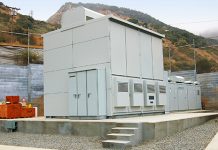John Petersen
After the market closed on Monday, Exide Technologies (XIDE) released surprisingly poor second quarter results, a $3.6 million loss that included a $5.7 million charge for several years of reporting irregularities at a small Portuguese recycling subsidiary. The market’s reaction was absolutely savage as the stock collapsed from Monday’s close of $4.48 to Friday’s close of $3.01. In my view, the reaction was unjustified and has set up a tremendous buying opportunity for investors who are willing to look beyond the headlines and focus on core business fundamentals.
To put things in perspective, Exide’s stock has closed at or below Friday’s price on 24 days since October 2007, and 22 of those days were during the depths of the March 2009 market melt-down. The stock is currently trading at a 59% discount to its 200-day moving average of $7.32, a mere 7.6% of annual sales and about 57% of book value. Despite some obvious challenges Exide faces over the next year, this is a blood in the streets buying opportunity.
Since I started blogging in the summer of 2008 Exide’s stock has seen more ups and downs than a high-tech roller coaster. The following chart overlays the 10-, 20-, 50- and 200-day weighted moving average price on the 200-day moving average volume since July 2008.

To a casual observer the chart looks absolutely chaotic, but most of the blame for bizarre price swings can be attributed to factors that have nothing to do with Exide’s business. On December 31, 2009, a family of funds managed by Jeffrey Gendell owned 23,705,133 shares, or about 30% of Exide’s outstanding stock. The following is table derived from holding reports and other SEC filings and summarizes the quarterly Gendell stock sales in 2010 and 2011. The timeframes marked with red bars in the chart coincide exactly with the periods of heaviest Gendell selling.
| Date | Balance | Sales |
| 31-Dec-09 | 23,705,133 | – |
| 31-Mar-10 | 20,738,399 | (2,966,734) |
| 30-Jun-10 | 15,089,230 | (5,649,169) |
| 30-Sep-10 | 12,312,410 | (2,776,820) |
| 31-Dec-10 | 10,295,260 | (2,017,150) |
| 31-Mar-11 | 9,489,476 | (805,784) |
| 30-Jun-11 | 9,489,476 | – |
| 26-Sep-11 | 7,799,476 | (1,690,000) |
Since the beginning of 2010 a single holder has pushed almost 16 million shares into the market with catastrophic results for the stock price. When the selling abated for a while in the first two quarters of 2011 the stock price tripled, only to crash yet again when the selling began anew. The bottom line reality is that no market can hold up under sustained selling pressure from large stockholders and it doesn’t matter whether the sustained selling pressure occurs in an industry leader like Exide or a newcomer like Axion Power International (AXPW.OB). The result is always the same.
I’ll not minimize the challenges Exide must face as it idles its flooded lead-acid battery plant in Bristol, Tennessee and restructures its domestic manufacturing and distribution network, but total restructuring costs over the next 12 months should amount to less than half of the average annual restructuring costs Exide incurred over the last three years and the positive impact on short- to medium-term earnings should be substantial. It’s also important to note that Exide is just now entering its two strongest fiscal quarters and expects to report significant earnings for the current year.
As Exide gets its house in order over the next two years, its price to book ratio should climb into the 1.75 range and its price to sales ratio should climb into the 55% range, which implies an upside potential of 300% to 500%. The challenges Exide faces are serious, but they’re ordinary course of business challenges, rather than existential challenges.
Disclosure: Author is a former director of Axion Power International (AXPW.OB) and holds a substantial long position in its common stock.








